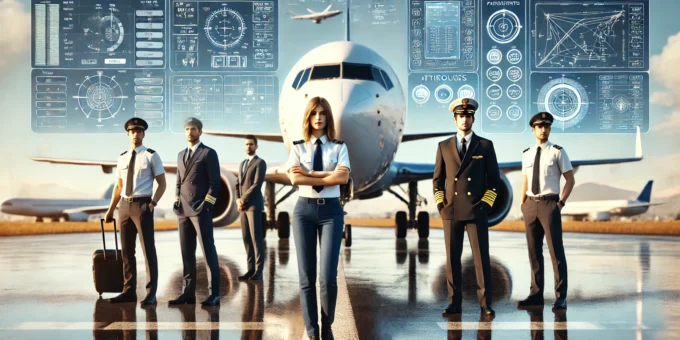
Aviation has always been at the forefront of innovation, driven by the need for safety, precision, and efficiency. The evolution of pilot technology upgrades for modern aircraft exemplifies this. From early mechanical instruments to today’s advanced digital systems, technology now provides pilots with tools that ensure safer and more efficient operations. In this article, we delve into groundbreaking upgrades that are shaping the aviation industry.
Advanced Avionics Systems
Modern aircraft are equipped with state-of-the-art avionics systems that replace traditional analog instruments. These upgrades include glass cockpit technology, which consolidates information on digital screens, reducing clutter and simplifying data interpretation. Pilots can now access real-time data integration, allowing for better decision-making during flight.
Additionally, avionics advancements improve situational awareness by combining multiple sources of information, such as navigation, weather, and engine performance, into an intuitive interface.
Enhanced Navigation Systems
Navigation systems have undergone significant transformation, with GPS advancements at the core of this evolution. Modern systems incorporate synthetic vision technology, offering pilots a 3D representation of terrain and obstacles, even in poor visibility conditions.
Moving maps provide real-time positioning and route information, ensuring accurate navigation throughout the journey. These tools enhance precision and reduce the risk of errors, making them indispensable for today’s pilots.
Flight Automation Technologies
Automation plays a pivotal role in reducing pilot workload and improving flight efficiency. Autopilot systems have evolved to manage complex tasks such as ascent, descent, and navigation, allowing pilots to focus on overall mission management.
The integration of automated flight control systems ensures seamless transitions between manual and automated operations, enhancing both safety and reliability.
Weather Forecasting Tools
Unpredictable weather has always been a challenge in aviation. Modern tools now provide real-time weather updates directly to the cockpit. Pilots can view detailed radar images, turbulence predictions, and wind conditions.
This capability helps pilots avoid hazardous conditions, ensuring smoother and safer flights. Turbulence detection systems further enhance passenger comfort by enabling proactive route adjustments.
Communication Upgrades
Communication is crucial in aviation, and advancements in this area have brought about NextGen communication systems. These include data link communications, which allow for seamless information exchange between pilots and air traffic controllers.
NextGen systems also reduce misunderstandings caused by voice transmissions, promoting efficiency and safety in airspace.
Digital Checklists and Monitoring
Gone are the days of bulky paper manuals in the cockpit. Electronic Flight Bags (EFBs) have replaced traditional checklists, offering pilots a digital interface to manage flight operations. These devices streamline procedures and ensure accurate monitoring of aircraft performance.
Pilot Assistance Technologies
Emerging AI-based co-pilot systems provide an additional layer of safety by assisting pilots in complex decision-making scenarios. Furthermore, fatigue monitoring tools alert pilots when they exhibit signs of weariness, ensuring optimal performance throughout the flight.
Heads-Up Displays (HUD)
Heads-up displays are revolutionizing how pilots interact with critical data. These systems project flight information directly onto the windshield, allowing pilots to keep their eyes on the sky. Augmented reality interfaces further enhance situational awareness by overlaying vital information on the external environment.
Predictive Maintenance Tools
Maintenance is essential for aviation safety, and predictive technologies are changing the game. IoT-enabled sensors continuously monitor aircraft systems, alerting crews to potential issues before they become critical. This proactive approach minimizes downtime and improves operational efficiency.
FAQs
How do modern avionics systems enhance safety?
Modern avionics integrate real-time data, improving situational awareness and decision-making capabilities for pilots.
What are electronic flight bags, and why are they important?
Electronic flight bags digitize operational manuals and checklists, streamlining flight management and reducing paper use.
What role does AI play in pilot assistance technologies?
AI systems support pilots by providing decision-making assistance, monitoring fatigue, and enhancing situational awareness.
How have weather tools improved aviation safety?
Real-time weather updates and turbulence detection systems allow pilots to make informed route adjustments, reducing risks.
What are the benefits of synthetic vision technology?
Synthetic vision offers 3D terrain mapping, helping pilots navigate challenging environments, especially in low visibility.
How does predictive maintenance impact aviation efficiency?
Predictive tools identify potential mechanical issues early, reducing aircraft downtime and ensuring smooth operations.
You Can Also Read : The Latest Innovations in Pilot Technology You Need to Know
Conclusion
The aviation industry continues to embrace innovation, ensuring pilots have access to the most advanced tools available. These upgrades not only improve flight safety but also enhance efficiency, sustainability, and passenger experience. As technology advances, the future of aviation promises even greater achievements.
